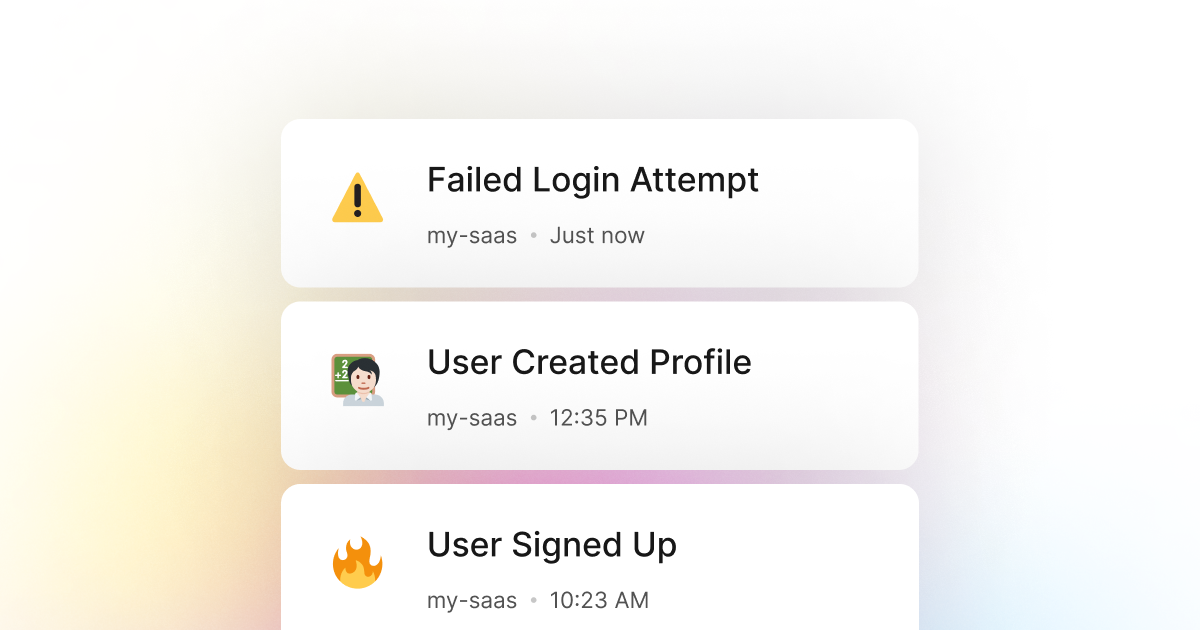Most Objective-C applications require some form of authentication for users to access the application. This is a common practice to ensure that only authorized users can access the application and prevent security issues such as API abuse. These authentication methods can be implemented in various ways, but the most common are basic authentication, Social logins (Google, Facebook, etc.), and more.
With either method, we commonly have to deal with failed logins, be it due to incorrect credentials or other reasons, such as someone trying to brute-force the login. In such cases, monitoring failed logins and taking action depending on the situation is crucial. For example, suppose we notice a user repeatedly falling to login. In that case, we can take action to reach out to them and offer help, or in cases of brute-force attacks, we can take immediate action to block the user's IP address, notify the targeted user, and more.
Here at LogSnag, we have worked on a powerful solution for monitoring and tracking problems. We have created LogSnag, a powerful, real-time event tracking tool that works seamlessly with Objective-C. We have made it trivial to set up real-time event tracking for anything important within our applications. In addition, we provide powerful features that let us take event tracking to the next level and do things like creating user journeys, analytics, insights, and more.
For example, in the case of failed logins, we can set up LogSnag to track failed attempts and notify our team when we observe unusual behavior. This way, we can always be aware of the security of our application and take immediate action if needed.
Setting up LogSnag
- Sign up for a free LogSnag account.
- Create your first project from the dashboard.
- Head to settings and copy your API token.
Objective-C code snippets
To track failed logins, you can use the following code snippet
Please ensure to replace YOUR_API_TOKEN with your API token and update the project and channel names.
Using Objective-C with NSURLSession
Objective-C integration details
We believe that event tracking should be simple and accessible to every developer and team. Therefore, we have worked hard to create the next generation of event-tracking tools. As a result, LogSnag is flexible and easy to use, making it a great companion for your Objective-C applications.
We would love to see you use LogSnag to track every aspect of your Objective-C application. So please give us a try and let us know what you think!
Other use-cases for LogSnag
- Monitor your CI/CD build status for your Objective-C application
- Monitor your CPU usage in your Objective-C application
- Monitor when database goes down in your Objective-C application
- Monitor high disk usage in your Objective-C application
- Monitor when a user changes their email address in your Objective-C application
- Monitor failed payments for your Objective-C application
- Monitor memory usage in your Objective-C application
- Monitor MySQL downtime in your Objective-C application
- Monitor when a new feature is used in your Objective-C application
- Monitor your Postgres downtime in your Objective-C application
- Monitor Redis downtime in your Objective-C application
- Monitor suspicious activity in your Objective-C application
- Monitor when a user exceeds the usage limit for your Objective-C service
- Monitor when a user is being rate limited in your Objective-C application
- Get a notification when your Objective-C code is done executing
- Send push notifications to your phone or desktop using Objective-C
- Track canceled subscriptions in your Objective-C application
- Track your Objective-C cron jobs
- Track when a file is uploaded to your Objective-C application
- Track when a form is submitted to your Objective-C application
- Track payment events via Objective-C
- Track user sign in events in Objective-C
- Track user signup events via Objective-C
- Track waitlist signup events via Objective-C

